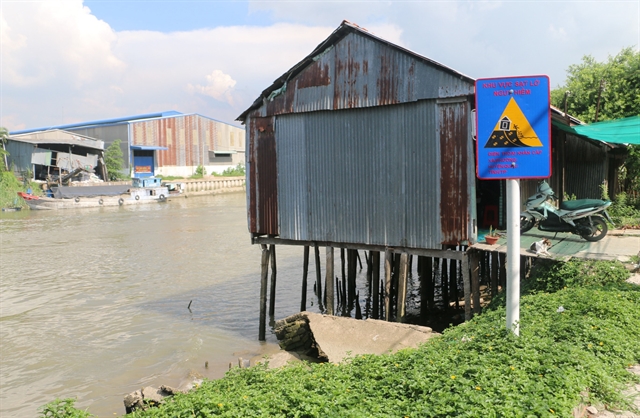 Society
Society

The An Giang Province People’s Committee has declared an emergency following repeated erosion along a canal bank in Long Xuyên City’s Mỹ Thạnh Ward.

|
| The Cái Sắn Canal in An Giang Province’s Long Xuyên City. The province has declared an emergency following erosion along the canal in the city’s Mỹ Thạnh Ward. – VNA/VNS Photo Công Mạo |
AN GIANG – The An Giang Province People’s Committee has declared an emergency following repeated erosion along a canal bank in Long Xuyên City’s Mỹ Thạnh Ward.
On May 25 the Cái Sắn Canal had suffered erosion and subsidence along a 175-metre stretch at Cái Sắn Market and a residential area, which affected 39 houses on stilts along it.
It was the fourth time since 2019 this particular section between the Năm Sú Canal and Sáu Bá Ditch had suffered from erosion or subsidence or both.
Trương Kiến Thọ, deputy director of the province Department of Agriculture and Rural Development, said, “The erosion in the section [is likely] to worsen” and affect a 2,300-metre section from the mouth of the Hậu River to the Mỹ Thạnh Ward.
The cause has been tentatively identified as strong water flows the along a bend and heavy waterway traffic, he said.
Rice mills dot the canal bank in Cần Thơ City’s Thốt Nốt District, attracting many boats, and they create strong waves that slam into the canal bank on the An Giang side, causing erosion.
The People’s Committee has instructed the Department of Natural Resources and Environment to identify erosion-prone areas and set up safe corridors around the area.
Trần Anh Thư, deputy chairman of the People’s Committee, said Long Xuyên has been ordered to instal warning boards and set up barriers to prevent people and vehicles from entering the eroded area, closely monitor the erosion and ensure safety.
It has been told to immediately draft a plan to check the erosion and submit to the People’s Committee for approval, he added.
The city is encouraging people to move out of dangerously eroded and erosion-prone areas. – VNS




